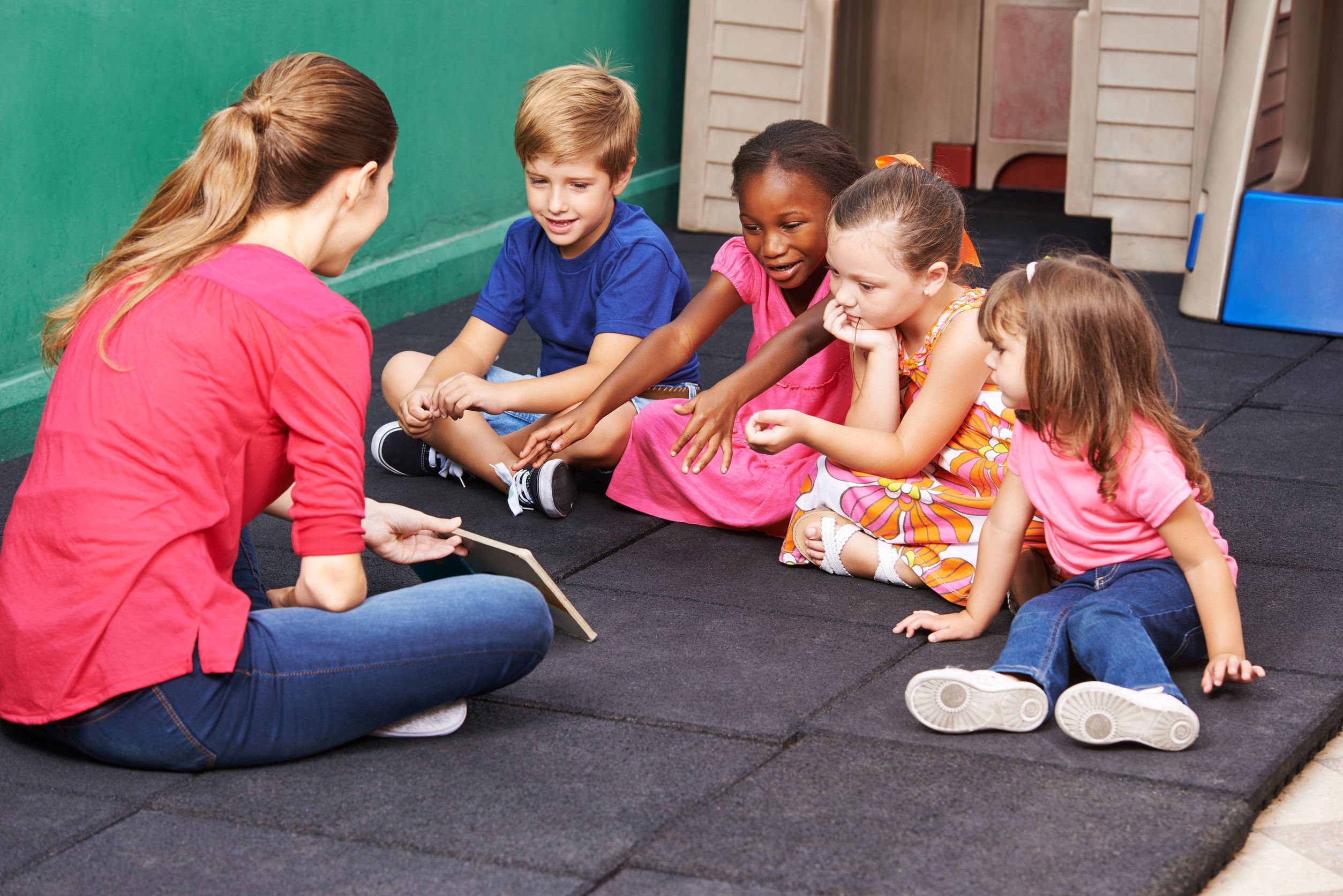
In this article, you will find important information about how to talk to children about common tough topics, including shootings, death, racism, mental health, illness, divorce, and more. Also find a step-by-step guide with a free PDF printable handout for talking to kids about tough topics, in general, tips on trauma-informed care, and book lists to help guide children to exploring tough topics in an age-appropriate way.
With so much going on in our world today, we may all be asking ourselves: What topics do we need to prepare to talk about with our kids?
Although the reality of this is heartbreaking, it is likely that many children are already being exposed to challenging and traumatizing topics, including gun violence related to school shootings, loss and death, racism and discrimination, and mental health crises, whether it be their own lived experiences or access to information via social media or the internet.
It can be scary to address these topics with kids, and it is natural to feel unprepared, but talking with children about tough topics is incredibly important.
As adults who play a significant role in children’s development, answering the difficult questions our children have and engaging in these tough conversations is part of our responsibility for their well-being.
It is also our responsibility to be on the lookout for signs of trauma that children may be dealing with without being able to let us know – changes in mood, bad dreams or night terrors, or even regressive behaviors like bedwetting. This is an understandably daunting task when you zoom out and realize just how much we are all navigating every day.
In this article, we will walk through some of the most challenging topics that children may bring up, offer age-appropriate tips for preschool and up, steps, ways to identify trauma in children, and strategies for navigating conversations about those topics, and provide children’s book recommendations and resources that can help make having these conversations a little bit easier.
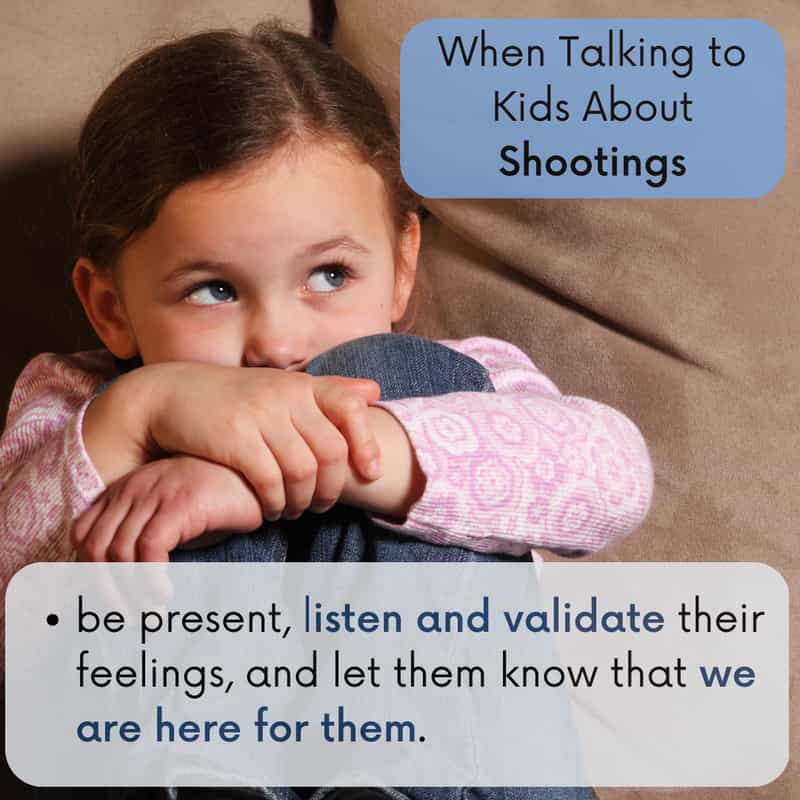
As of March 28, 2023, there have been 130 mass shootings in the United States in the year 2023 alone. Of these incidents, 13 have been school shootings. It is now commonplace in schools for students, teachers, and staff to participate in active shooter drills and lockdown procedures, which can be traumatizing for everyone involved.
In order to process the trauma, fear, and stress that can arise when it comes to school shootings, children may need to engage in art projects, writing, movement, or play-based scenarios to help them express their feelings. They may also find comfort in talking about it with their peers or asking parents and teachers questions.
⚠️ The most important thing we can do in these moments is to be present, listen and validate their feelings, and let them know that we are here for them.
Our children are not alone in feeling traumatized by the violence and looming fear of school shootings. Parents and caregivers are dealing with the fear and anxiety of sending their children to school without knowing if they will return home safely. Educators are going to work not knowing if they will be able to do the jobs they were hired to do or step in as a first responder if there is a lockdown. It is important to remember that carrying this much emotional stress is not something we are always equipped to do. It’s okay to not be okay and to seek out professional support during times when it feels like too much to handle on your own.
📖 Book Recommendations for Talking to Kids About Violence and Scary Times
.png?quality=low&width=800&height=800&name=Talking%20to%20kids%20about%20death%20(1).png)
Grief is a complicated feeling that affects everyone differently, and sitting with the grief of losing someone or something close to us because they died is incredibly hard, even for adults.
For young children, death may seem too abstract for them to fully understand and process. They may ask, “When are they coming back? Why can’t we visit them anymore?” or grapple with the unfairness of losing someone they loved.
It can be challenging and distressing for adults who care for children to see them struggle with feelings of grief and loss and not know how to help.
⚠️ Some of the most important things we can do is to validate the feelings children are experiencing, allow them to feel them for as long as they need to, and remind children of the happy and cozy memories that they will always have to look back on and remember lost loved ones.
📖Book Recommendations for Talking to Kids About Death
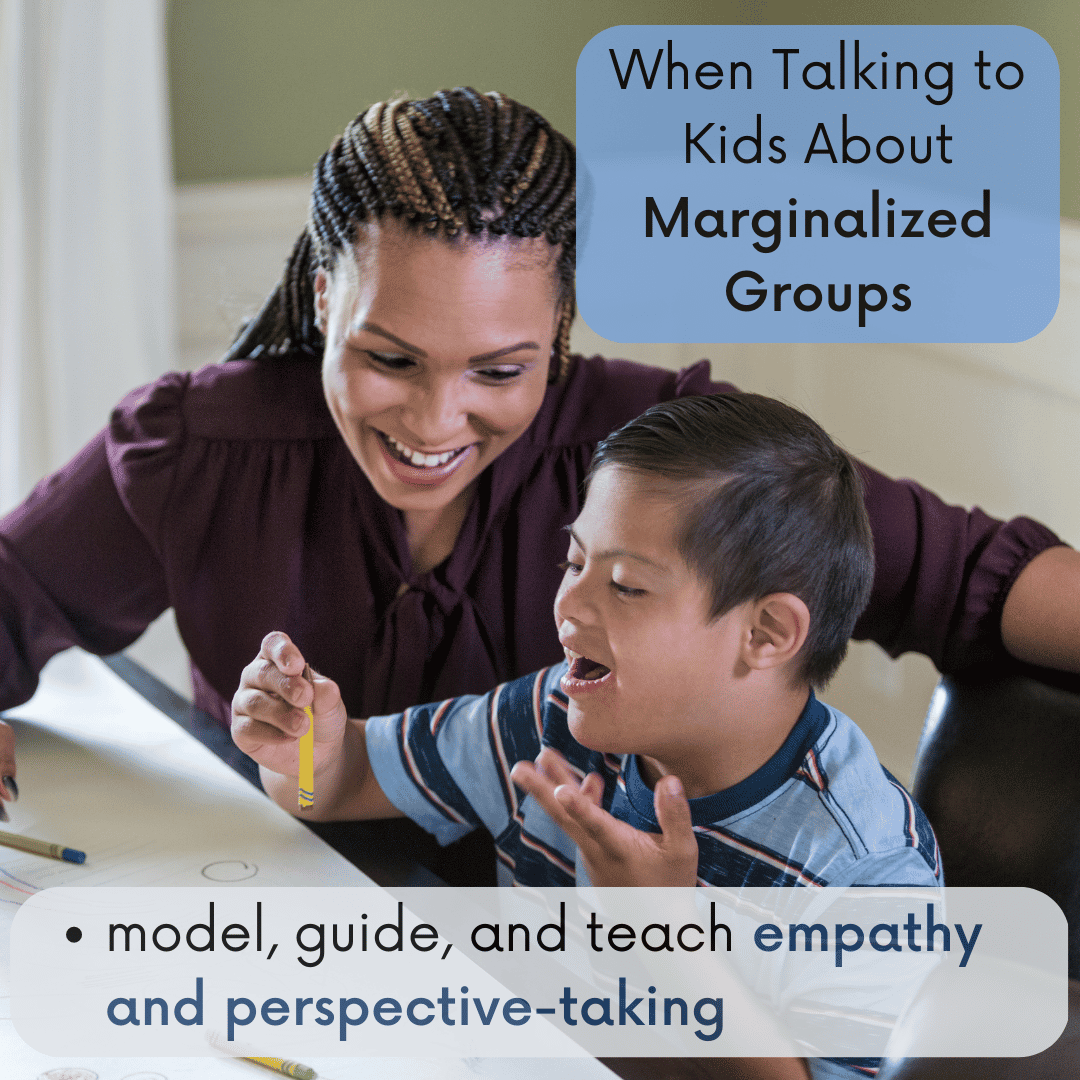
For Black people, Indigenous people, people of color, members of the LGBTQIA+ community, members of the disabled community, or anyone whose identity intersects these marginalized groups, navigating exclusion and discrimination is a daily practice that understandably affects their mental health and well-being. In fact, both the National Alliance on Mental Illness and the CDC have declared racism a public health threat. People within these groups are having much different challenging conversations with their children than those who are not to ensure their safety to the best of their ability.
Whether or not a child is a part of these groups, any child may have questions or need guidance when it comes to interacting with cultures, perspectives, or experiences that are different from their own.
As caregivers of young children, it is our responsibility to model, guide, and teach important skills like empathy and perspective-taking from their earliest years to shape kindness, respect for differences, and a sense of righteousness for the next generation.
⚠️ It has always been important to listen to and believe the voices of marginalized groups and individuals, and it is those voices that should be centered when talking to children about race and discrimination. It should also be those voices who we celebrate and uplift every day, not just one month out of the year.
📖 Book Recommendations for Talking to Kids About Racism and Exclusion
Related: 8 Ways to Make Your Classroom Culturally Inclusive Year-Round
Let’s check in for a second and be honest with ourselves...is your mental health in a place that you would like it to be? If the answer is no, you are far from alone. According to the National Institute of Mental Health, mental illness affects tens of millions of people in the United States each year. Taking into account the pandemic, mental health has been steadily declining since 2021, especially for young people.
So, with adults and children navigating mental health issues every day, how can teachers, parents, and caregivers truly be present for the children in their lives? There is no denying that there needs to be a systemic and structural shift in the way we prioritize mental health, especially in our schools, but one thing we can do right now is allow ourselves to feel.
⚠️ Acknowledge your own feelings, what is causing them, and what boundaries or strategies help us feel better able to cope each day. When we start with ourselves, we learn to be better models for the children in our care, which will set them up for future success and well-being.
Keep Your Students’ and Your Mental Health Strong
|
The Mental Health of Adults in Children's Lives
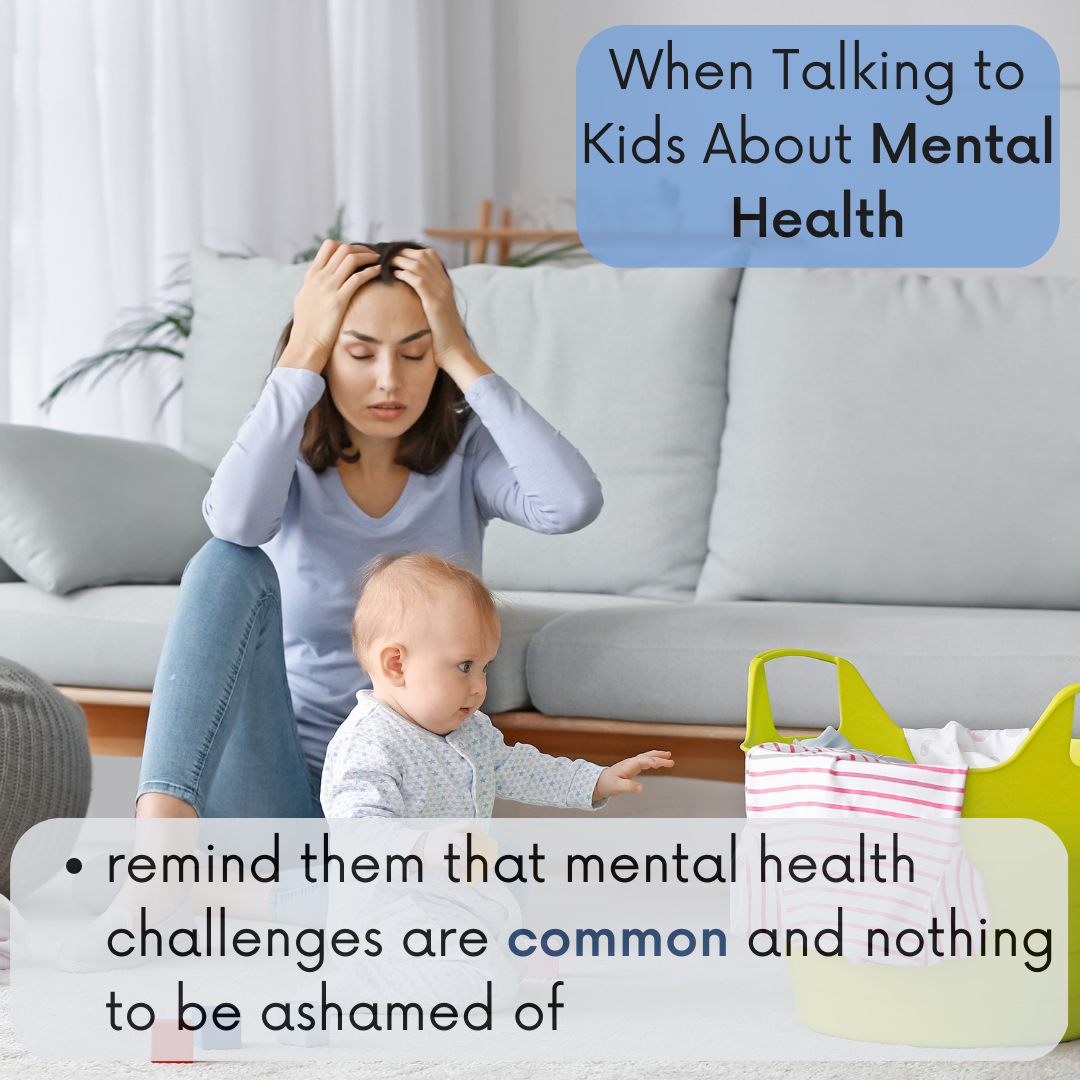
When discussing the mental health of others with children,especially that of key adults in their lives, it's important to approach the topic with care and sensitivity.
⚠️ Start by creating a safe space for the child to ask questions and express their thoughts and feelings. Use age-appropriate language and avoid oversharing details that might be too intense or distressing.
Focus on the positive steps that can be taken to support the mental health of the person in question, such as checking in regularly, offering words of encouragement, and seeking professional help if needed.
Encourage the child to be empathetic and understanding, and remind them that mental health challenges are common and nothing to be ashamed of.
When talking to children about their mental health, it's important to use age-appropriate language and be open and honest.
⚠️ Start by asking them what they are feeling and listen without judgment. Let them know that it's okay to feel sad or anxious and that it's important to take care of their mental health just like their physical health.
Encourage them to express their emotions and offer appropriate coping strategies, such as movement, deep breathing, fidget toys, or talking to a trusted adult.
Remind them that seeking help is a sign of strength and that you are there to support them every step of the way.
📖 Book Recommendations for Talking to Kids About Emotions and Mental Health
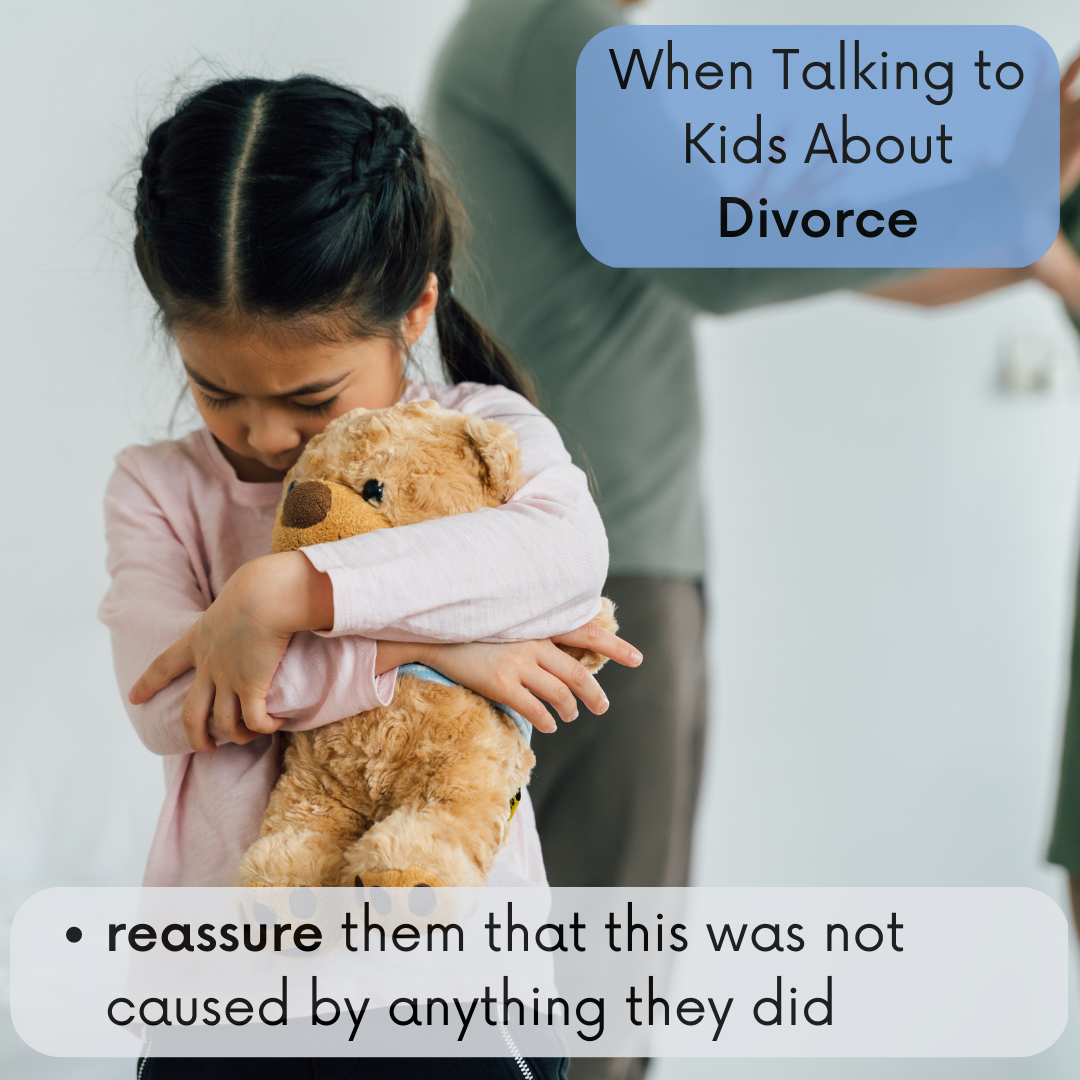
Divorce or changes in a family structure can be difficult to explain to a child, and that is especially true for young children who don’t yet have a grasp on changes that will happen in the future. They may take it personally, think it’s their fault, or ask questions like, “Who will take care of me?” For young children, like preschoolers, keeping answers short and honest and keeping the door open for future conversations is a good first step. Ensure that young children understand that they will always be cared for and loved. For families experiencing divorce, creating a schedule can help children stay consistent, understand, and know what to expect.
For older children, you can reassure them that this is an adult decision that was not caused by anything the child did. Making sure there are consistent routines in place can also help ease a transition where things may feel different or unpredictable. Most importantly, parents and caregivers can support children experiencing divorce or change in family dynamics by fostering a loving environment where children feel safe to discuss these difficult situations and ask questions as they arise.
A lot of changes can shift a family dynamic or routine other than divorce, and these changes may be just as challenging to discuss with children.
Remarriage, blended families, bringing home a new baby, long-distance relationships, and even the incarceration or addiction struggles of family members are all topics that children may have questions or big feelings about. When these changes occur, try your best to gradually talk to children about what is going on.
Some changes are sudden, but for those that will be happening over a period of time, do your best not to tell children everything at once.
This can be overwhelming, and they will need additional conversations anyways to process what they are thinking and feeling. Start small, leave room for questions, find out what they already know, and let them know that you are here for them to talk again when they need it.
📖 Book Recommendations for Talking to Kids About Divorce and Family Changes
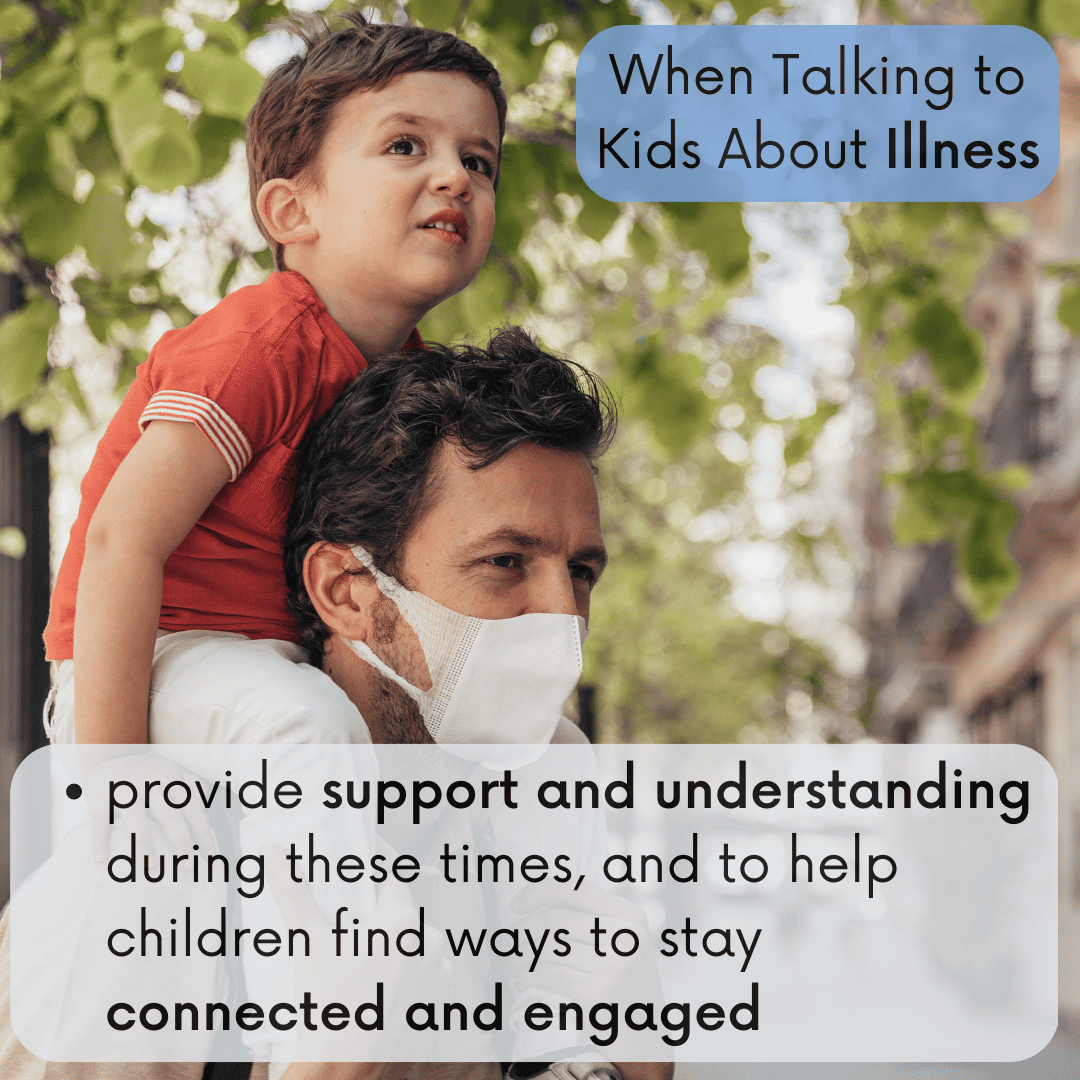
After nearly three and a half years of the COVID-19 pandemic, some of our youngest children have never experienced a reality without masks, distancing, and illness around them. We have all been dealing with an incredible amount of stress when it comes to the pandemic, including the symptoms and even death of loved ones. However, this is not the only instance of illness that affects us and the children we care about.
From something as simple as everyday germs or the common cold to something as serious as cancer, there can be a lot of fear and anxiety around getting sick, especially for young children. Teachers and caregivers can have simple conversations around handwashing, covering our mouths, and ways to keep ourselves and others safe every day to put some anxiety at bay. For the more serious conversations, be honest, acknowledge the feelings that children have, and explain that you are there to support them and are open to having conversations as they come up.
Some children and families may not be able to visit loved ones due to travel bans or the risk of potentially spreading illness. Children may experience a range of emotions when faced with social isolation or the inability to visit relatives due to a travel ban. They may feel lonely, sad, anxious, or frustrated. They may miss the social interactions and activities they used to enjoy, and they may struggle to understand why they are unable to see their loved ones. Children may also feel a sense of loss or grief for the experiences they are missing out on. It is important for caregivers to provide support and understanding during these times, and to help children find ways to stay connected and engaged.
📖 Book Recommendations for Talking to Kids About Illness
Children who feel scared and worried will understandably turn to adults for support, but parents and caregivers may struggle with how to even begin having those tough conversations. When it comes to talking about scary times, there is no magic formula, but there are a few steps you can follow to help you get started.
1. Remember to Take Care of You
You are your children’s safe space, and that responsibility can have its own toll on the mental health of parents, caregivers, or any adult in a helping profession. Before we can support the children in our care with managing and processing their own feelings around traumatic events or difficult situations, we need to make sure we have our own supports in place. But what does this look like?
Take time to acknowledge your own feelings, what is causing them, how you can express these feelings constructively, and what strategies help you to manage them before they escalate. From here, you can support children in doing the same so they don’t feel so weighed down by the feelings these situations can bring up.
It’s okay to not have all the answers! Odds are the tough topics children bring up to talk with you about will be tough for you, too. You can let them know you’re not sure, that you need time to think, or that you can figure it out together, as long as you commit to following through once your own needs are met.
However, being honest about your feelings does not mean acting on emotional impulses. But we are all human, and mistakes happen. If this happens, following through and checking in is the most important step. For example, if you lose your temper around a child, taking responsibility for your behavior and apologizing shows them that making mistakes is okay —even adults can make mistakes. Calmly explain that how you responded was not okay and that you are working on expressing and managing your feelings in a better way next time. This models growth and can provide children with their own regulation strategies.
Remember that it’s okay to take a break and step away from a heated situation to calm down. You can then return to talk with your child to address any concerns or issues that might have caused heightened feelings. Practicing mindfulness and stress-reducing techniques can also help prevent emotions from escalating in the future, and this goes for adults and children alike.
Children, especially young children, need support from adults to identify, understand, and manage their feelings before they are able to do so on their own. Be aware of changes in mood, body language, facial expressions, tone of voice, regression, tantrums, power struggles, or other indicators that children are experiencing strong feelings related to trauma. Give space for them to identify what they are feeling and offer support if needed.
“I’ve noticed you acting different than you usually do. You seem quieter and low on energy. What are you feeling? Sometimes when I’m feeling anxious or depressed, my body responds the same way. I’m here to listen if you want to talk about it.”
“I can see a big frown on your face, and I’ve noticed you’ve been wanting to hit things lately. Are you feeling angry? What is making you feel that way? Things like that make me feel angry, too. Instead of hitting, we can talk about it together to help get our feelings out.”
Feelings around topics like violence, racism, divorce, and death will not be resolved after one conversation. As children continue to process their emotions and experiences, they will likely have more questions to ask or changing feelings that they may want to unpack with a trusted adult. Let children know that you are there for them in those moments and that the conversations you have together are never just one-and-done.
Talking through strategies and routines that work for you, your family, or your classroom to help regulate your mind and body and keep you safe can be a great comfort during times of uncertainty and stress. Find regulated moments to talk through things that help you and your children feel better when you feel angry, scared, sad, or worried, and practice those strategies together.
🖨️Download: 5 Steps for Talking to Kids About Tough Topics (PDF)
Children who have experienced trauma or traumatic events require sensitive and gentle support that meets them where they are. Children who have dealt with any of the challenging topics we have covered may be dealing with trauma, which can make it difficult to go about their everyday tasks and routines like they used to.
These trauma-informed strategies and tips can guide parents, teachers, or any caregiver in beginning to reach children who are navigating these challenges, as well as the feelings and stress that go along with them.
Related: Do's and Don'ts of Trauma-Informed Care (PDF)
Children need stable caregivers to provide support when they feel stuck or out of control. Responsive relationships help children feel more comfortable opening up, discussing their feelings and a cause, and knowing that they can depend on a trusted adult through challenging or traumatic times. Children grow in their resiliency within responsive relationships with adults who have the skills to identify, understand, express, and manage their own emotions and can support children in doing the same.
Support children in expressing their feelings, concerns, experiences, perspectives, and ideas when they are ready, and actively listen when they do. Be attuned to their body language and responses, as well as your own responses and reactions. Respond to children sensitively and provide reassurance and validation. If children ask questions, respond in ways that they understand.
It is important to take a positive approach when addressing changes in behavior or feelings. For example, if a child hits, calmly explain why hitting isn’t okay – because it hurts. When you close the door on inappropriate behaviors, always open the door to appropriate ones – if you hit because you are angry, let’s hit a pillow instead. Praise and provide positive attention when a child does not hit – I noticed that you used your words instead of hitting. I’m so proud of you for making that choice. Ensure that children still feel cared for, valued, and loved, even when they are demonstrating disruptive or inappropriate behaviors.
When experiencing trauma, children may have difficulty trusting others. Creating a safe space ensures that children feel nurtured both by responsive relationships and their environment. Establish a quiet area to make a “Calm Down Corner” or calm down space. In this safe space, include:
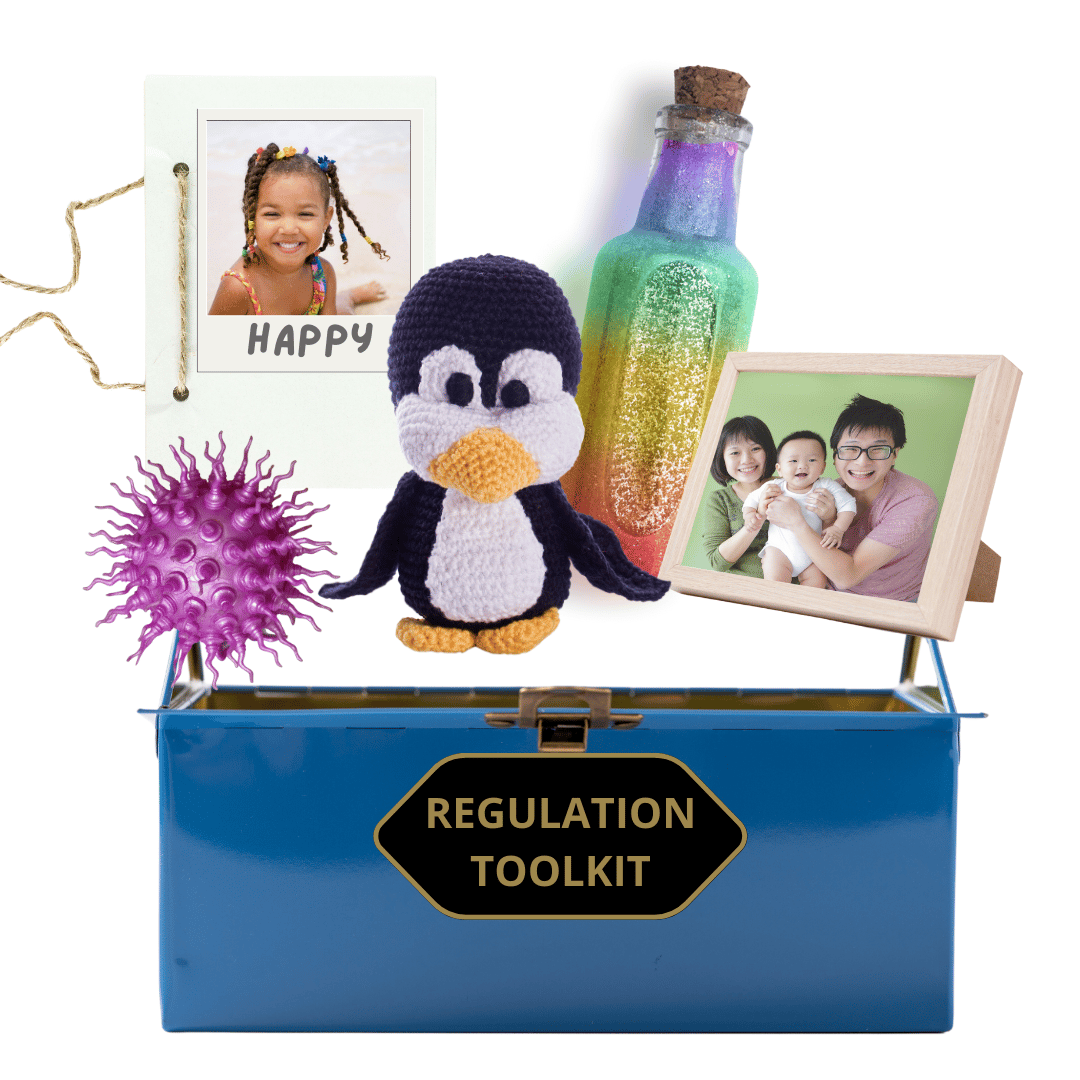
Related: Calm Down Kit Free Printable
Access to safe, creative outlets can be healing for children. Providing reasonable choices within their play allows them to feel in control and strengthens self-esteem and autonomy. Guide them to create art and engage in imaginative, creative play to express and process their feelings, loss, and trauma safely. Teachers and caregivers can set up Emotional Intelligence (EI) -integrated activities during regulated moments as well so children can practice expressing a wide range of emotions through art, dramatic play, music, and movement.
There is a big world of resources out there for supporting children of any age through challenging or traumatic moments. Here is a list of book recommendations we have compiled for you to read with children to help jumpstart a tough conversation or answer challenging questions you might not have all the answers to.
Related: Making the Most of Storytime: Using Children’s Books to Teach Emotional Intelligence
External resources/links used in this blog:
).png?quality=low&width=310&height=310&name=Lauren%20Sturtz%20(Instagram%20Post%20(Square)).png)
Housman Institute, LLC
831 Beacon Street, Suite 407
Newton, MA 02459
info@housmaninstitute.org
(508)379-3012
Explore
Our Products
Legal
Connect
Contact
Join our Mailing List!
Subscribe to receive our newsletter, latest blogs, and ECSEL resources.
We respect and value your privacy.
No Comments Yet
Let us know what you think